Why is There a Dotted Line Running Down My 2 Up Continuous Pdf
Other articles you might like:
Wondering how to create high-quality labels from your home or office? Based on almost a century of label printing experience and top questions we've received from our customers, we've organized the key information you need to design and print labels at the best quality possible.
This comprehensive guide will walk you through the label printing process from start to finish, including how to select the right labels for your project, design your labels for the best results, prepare your printer settings and troubleshoot common printer issues.
With Avery, you also have the convenience of buying your labels online in minutes. You can order our blank labels by the sheet or use our in-store retail packs.
If you need to print a lot of labels or you need a professional look, try Avery WePrint, the custom printing service from the experts at Avery. Not sure what is better for your situation? Check out Printing Your Own Labels vs. Professional Printing to help you make the best decision for your project.
When printing your labels yourself, follow the steps below for the best results.
1. Choose the right label for your printer
The first step in printing your best labels is to make sure you buy the right labels. One of the most common mistakes is purchasing labels that are incompatible with your printer.
Inkjet and laser printers work differently. Some Avery labels will work with both but for best print quality, most of our labels are engineered to work with one or the other.
If you use laser labels in an inkjet printer, the ink will not absorb properly which causes smearing. Likewise, if inkjet labels are used in a laser printer, the toner will not adhere properly and will begin flaking.
An easy way to know what type of printer you have is by checking your cartridge type. Small ink cartridges are used with inkjet printers and larger toner cartridges are used with laser printers. If you're still not sure, visit the manufacturer's website or contact them for the most accurate information.
2. Pick the label layout for your project
The next aspect to keep in mind when choosing labels is knowing which labels will work best for your design. Does your label design use a full-color background? Do you need to print a full-page design? Are you planning on using a 4″ x 6″ sheet? Make sure that you choose labels that will provide the best results for the design you have in mind.
Designs that fill the entire label are known as full-bleed. The design will need to print beyond the border of the label to achieve this look. This is why print-to-the-edge labels are perfect for projects that are focused on colorful and impactful designs.
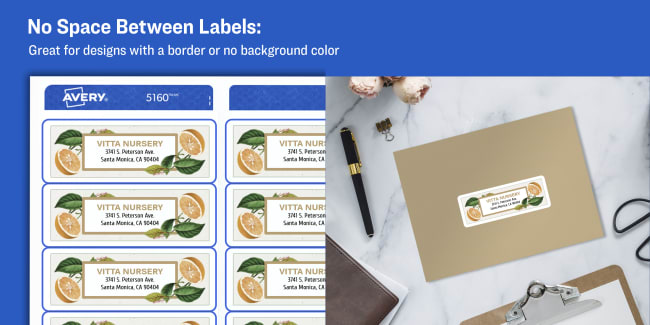
Bordered designs work great with classic address labels.
Labels without this extra space are better for designs that use borders or no background color at all. This condensed layout also allows for more labels per sheet, making this more cost-effective. For example, address labels for mailing lists and file folder labels would work perfectly with this sheet design.
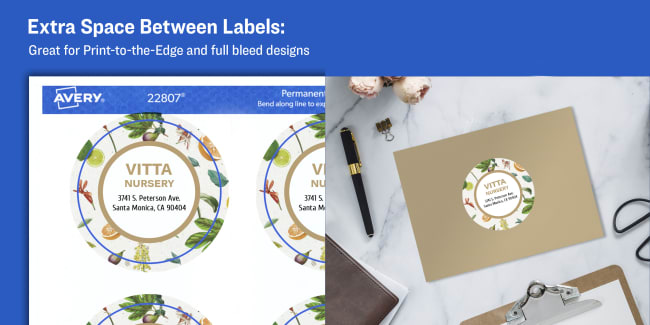
Print beautiful borderless designs on print-to-the-edge round labels.
Full-sheet labels
Are you having trouble finding the exact label size or shape that you need? Then a full 8-1/2″ x 11″ sheet label could be a perfect option. Just print out unique shapes that you can cut yourself with scissors or a cutting machine. Full-sheet labels are also perfect for printing large, eye-catching labels for bins and signs.
However, with full-sheet labels, make sure that your design stays away from the non-printable edges of the sheet. Some printers can print to the edge of the sheet but most will leave a blank margin around the sheet.
4 x 6 label sheets
Smaller 4″ x 6″ sheets of labels also exist and are a convenient size for storing and transportation. But check your printer options to confirm that it can print on this paper size. However, these labels are also great for handwriting.
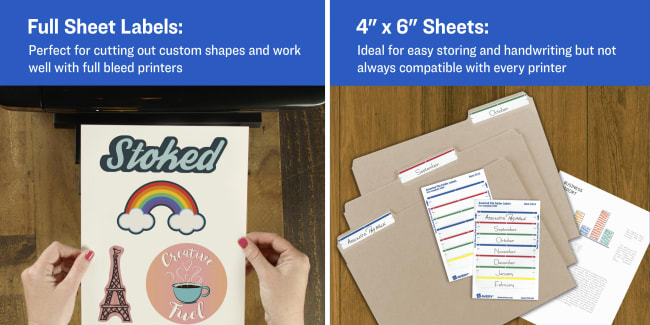
Print and cut out custom shapes with full-page sticker label sheets . Quickly handwrite labels on the spot with file folder labels on 4″ x 6″ sheets.
Use our guide on how to choose the correct label size to determine the exact size label you need. This helpful guide will help you narrow down your options so that you can buy the right labels.
Once you have the right labels, keep them stored in the original packaging. Also store them in a cool, dry location, as humidity can cause label sheets to curl. Also, having the original packaging is helpful. It contains the template number and printer compatibility.
3. Use the matching Avery template
A common mistake that leads to print misalignments is using the wrong label template with the wrong product. While other label companies claim to match Avery templates, Avery templates are designed only for Avery products.
Check the packaging or the Avery label sheet to find the 4-5 digit product or template number. Use that code to find the exact label template you need. If you need more help, check out how to find templates on avery.com.
You can also use our free Design & Print software which automatically optimizes your design. It will display the safety area, warn you when your design is incompatible, and offer you a variety of editing tools. Our software also allows you to choose from thousands of templates that are already optimized for the best print experience. Just personalize them your way and print.
4. Understanding the label printable area
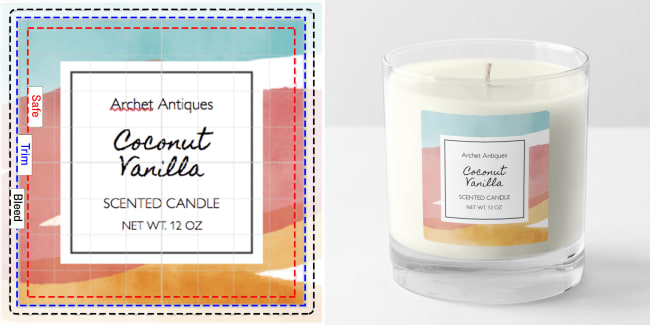
Design and print borderless templates with Avery 2″ square labels.
Before you begin the design process, it's important to realize how much of your label space is printable so that you can know what kind of canvas you are working with and prevent crucial parts of your design from getting clipped during the print. The printable area of a label will be divided into three sections:
Safety area: The section that is guaranteed to print on the label. Keep all of your important content such as text and business logos within this area.
Trim area: The physical border of the label. This border will give you a good approximation of where your design will be cut off.
Bleed or print-to-the-edge area: The extra design space outside the trim line that full-color backgrounds, images, and other content fills in order to have a print-to-the-edge or full-bleed design. Filling in this area ensures that there will not be any blank margins around your final label.
5. Design best practices
Unfortunately, printers aren't perfect. It's common for sheets to shift slightly during the printing process and this misalignment is easier to spot when trying to print accurately on label sheets. However, you can optimize your design by using safe, trim, and bleed areas to make any slight misalignments less noticeable. We also have a few tips you can keep in mind depending on the type of design you plan to print.
Make sure your text is legible
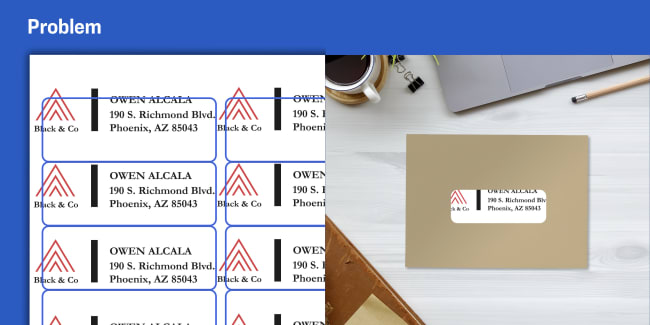
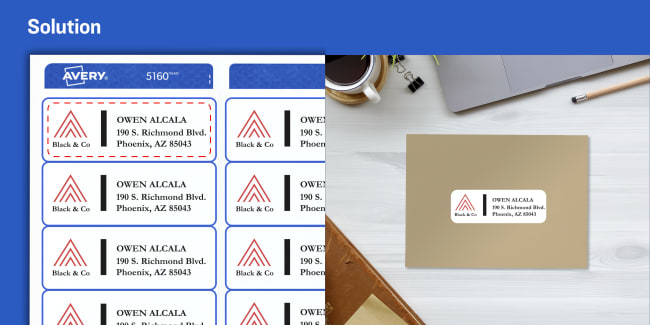
Keep vital information like names and addresses within the safety area to reduce the chance of crucial details getting cut off. Design & Print Online makes this easy to do by showing a warning when your content is moving out of the printable area.
You should also make sure that your text will be legible when printed at the actual size. Your font may seem readable when the entire label is filling your screen but it can look very different once printed. Try to use 7pt font or larger depending on the size of your label. Design & Print Online will also display a warning if your font size seems like it will be too small to read.
Also, make sure that your font color will stand out and won't blend into the background. If you want to learn more, you can check out our article on How To Pick the Right Fonts for Your Labels.
Achieve a full-bleed or print-to-the-edge look
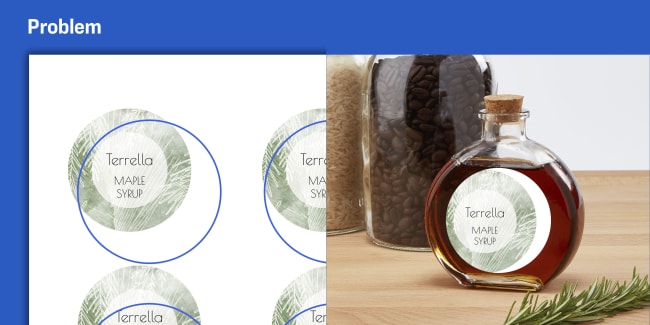
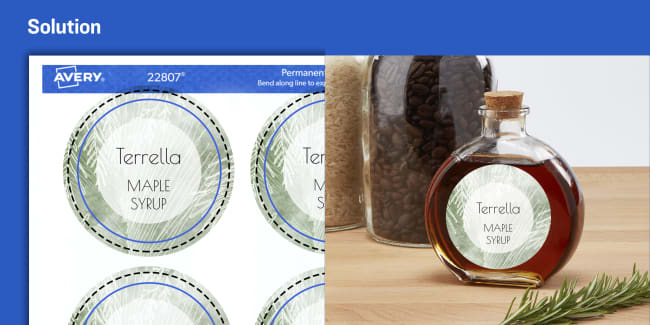
Not all labels are compatible with full-bleed designs so make sure that you are using the right template with Print-to-the-Edge labels. A quick way to check if you're using a Print-to-the-Edge template in Design & Print Online is to check if your design extends into the "bleed" or "Print-to-the-Edge" area past the label trim line.
Prevent overlapping designs on labels
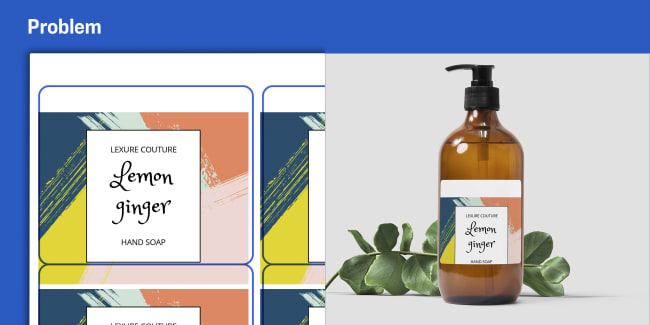
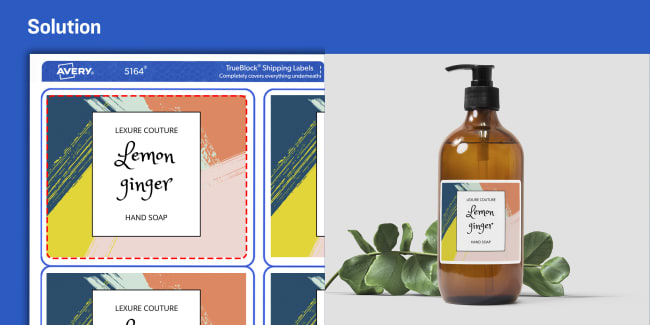
If the labels on your sheet do not have space between them, make sure that your design is comfortably within the safety area of your label. This will create a uniform border around your design and prevent your label design from printing on other labels on your sheet. You can also use completely blank backgrounds to make sure that your design won't cross over onto other labels.
Using full-sheet labels
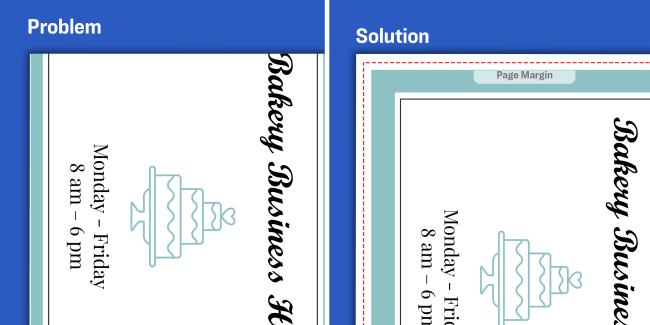
Easily print removable signs with blank or custom printed wall signs
Most printers won't be able to print to the edges of a sheet so it will be important for you to know the non-printable margins of your printer before printing your design on a full 8-1/2″ x 11″ label sheet. This area can vary depending on the printer model and manufacturer, but a .25″ margin around your design is a good general rule. Design & Print Online will show a dotted line to help you visualize the page margin on label templates that go to the edge of the sheet. Test your print on a blank sheet and check your printer options to confirm the printable area of your printer.
6. Pre-print procedures
Before you print labels, the three big printer settings to check are your paper size, paper type, and page scaling. However, this can be tricky since these settings can be named in different ways depending on your printer manufacturer. You can reference our help article on recommended printer settings for more assistance with navigating your printer options.
Paper size
In printer settings, the "sheet size" or "paper size" setting controls how your design is scaled to the label sheet. Make sure the size selected matches the size of the sheet of labels you are using. Otherwise, your labels will be misaligned. The most commonly used size is letter-size 8-1/2″ x 11″ paper. If you are using another sheet size, such as 4″ x 6″, make sure to change the paper size setting to 4″ x 6″.
Paper type
The "paper type" or "media type" setting changes the speed at which the sheet is fed through your printer. Change this setting to the "Labels" option to slow down the speed and reduce the risk of misalignment. If your printer does not have an option for "Labels," you can select one of the options for "Cardstock," "Heavyweight" or "Premium" instead. In some printers, the "Labels" or "Cardstock" option will also mean that your sheet will need to be fed through another tray like the manual feed tray. The manual feed tray will provide the best results since the sheet will be fed through the printer flat. This avoids having the sheet bend and curl while traveling up multiple printer rollers.
Page scaling
The page scaling setting should always be set to 100% or "Actual Size." Never use the "fit to the page" option, which will cause your design to shrink to the wrong size and result in misaligned labels.
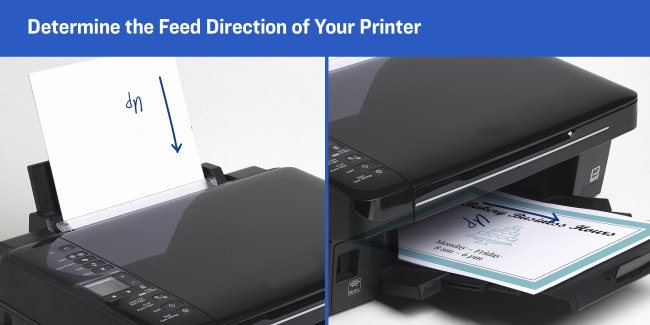
Whether it's one or a thousand, order as many sheets of 8-1/2″ x 11″ labels as you need with Avery printable labels.
Once you have these options set correctly, make a test print on a blank sheet of printer paper to see how they come out. Mark your blank test sheet beforehand to show which side is up and which direction the sheet is being fed so that you can confirm exactly how to feed the label sheets.
Most labels will just need to be fed with the right side facing up, but you can double-check the recommended feed direction by checking your Avery label sheet.
7. Troubleshooting
Notice something wrong with your printing? Here are some fixes to common problems when trying to print labels.
Print misalignment
Q: Why is the entire print shifting in one uniform direction?
A: Unfortunately, this can be caused by numerous factors and the exact cause can be difficult to trace. However, you can shift the print on the last step of Design & Print Online by choosing the option to adjust the print alignment. You can also adjust the margins of the print if you are using a downloadable template.
Q: Why are all of the labels printing toward a corner?
A: This is most often caused by the print trying to "fit to the page" and not printing at the correct size. Double-check your page scaling settings to make sure that the print is set for "actual size" or to print at 100% scale.
Paper jam
Q: Why are my labels jamming?
A: Paper jams can occur from several different factors including sheets being fed incorrectly and damaged printer rollers. Make sure that the paper or media type in your printer is set to print on labels to handle the sheet at the right speed. If you're printing stacks, you can also try to print one at a time or make sure that the sheets are separated and not clinging to each other. You can also try Avery labels with Sure Feed technology which are designed to reduce printer jams by providing a more reliable feed through your printer.
Smearing or smudging
Q: Why is the print smearing?
A: The most common cause of smearing will be because the labels are not compatible with the printer. Try double-checking and make sure that labels that are only compatible with laser printers were not accidentally used in an inkjet printer.
Blank margin around the label sheet
Q: Why is there a blank white margin around the sheet?
A: Many printers are not able to print to the edges of the sheet and this can leave behind a blank margin around the page. You can check if your printer is able to print with a full bleed or you can try using print-to-the-edge labels to work around this.
8. Print your labels
After making any final adjustments, go ahead and print again on the label sheets. And you're done!
If you still need a little help, you can contact our consumer care center for assistance or browse our helpful knowledge base for more answers. Not sure if printing labels is for you? You can also have our team of experts print your projects perfectly aligned and at the best quality with our WePrint printing service.
Source: https://www.avery.com/blog/how-to-print-labels/
0 Response to "Why is There a Dotted Line Running Down My 2 Up Continuous Pdf"
Post a Comment